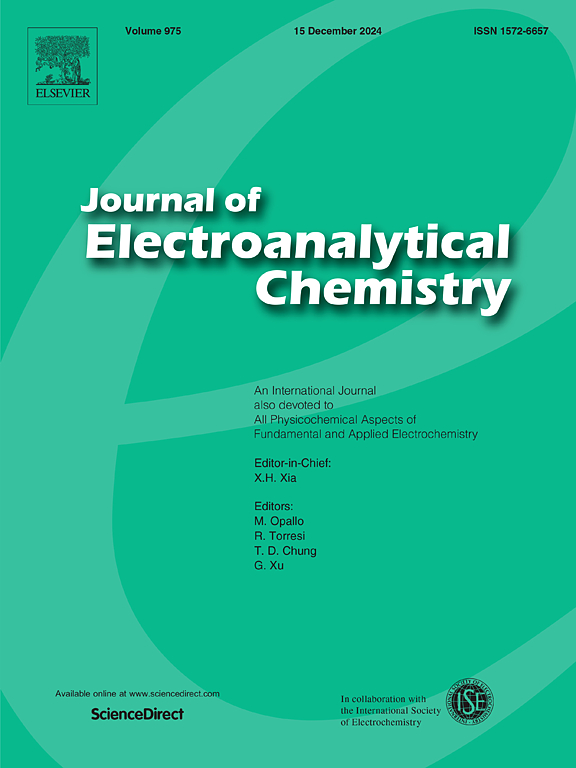通过掺杂镍和钴促进作为锌离子水电池阴极的 δ-MnO2 的协同活化
IF 4.1
3区 化学
Q1 CHEMISTRY, ANALYTICAL
引用次数: 0
摘要
层状 δ-MnO2 具有足够的层间间隔,可以容纳和迁移电荷载流子,因此被认为是一种很有前途的高性能水性锌离子电池(AZIB)阴极材料。然而,缓慢的活化过程限制了其可逆容量,从而阻碍了其应用。本研究设计了镍钴共掺杂层状δ-MnO2,以增强离子扩散能力和循环稳定性。通过对单一掺杂和共掺杂方法的比较分析,提出了镍和钴对长活化过程的影响机制。具体而言,优化的共掺杂δ-MnO2 在 1 A-g-1 的条件下循环 700 次后,保持了 200.2 mAh-g-1 的高比容量和 97.40 % 的容量保持率。共掺杂方法在抑制锰溶解和增强离子扩散能力方面表现出协同效应。这些发现为促进氧化锰的协同活化过程提供了新的方向,并为低成本、高安全性电池的合理设计提供了启示。本文章由计算机程序翻译,如有差异,请以英文原文为准。
Boosting the synergistic activation of δ-MnO2 as cathode for aqueous zinc-ion batteries through Ni, Co co-doping
Layered δ-MnO2 is regarded as a promising cathode material for high-performance aqueous zinc-ion batteries (AZIBs) due to the sufficient interlayer spacing for the accommodation and migration of charge carriers. However, the sluggish activation process limits the reversible capacity, thus prevent their application. In this study, Ni-Co co-doped layered δ-MnO2 was designed to enhance ion diffusion capability and cycling stability. The influencing mechanism of Ni and Co on the long activation process are proposed by a comparative analysis between single doping and co-doping approaches. Specifically, the optimized co-doped δ-MnO2 maintained a high specific capacity of 200.2 mAh·g−1 with a capacity retention of 97.40 % after 700 cycles at 1 A·g−1. The co-doping approach exhibited a synergistic effect in suppressing Mn dissolution and enhancing ion diffusion capability. These findings provide new directions on boosting the synergistic activation process of manganese oxide and shed lights on the rational design of low-cost and high-safe batteries.
求助全文
通过发布文献求助,成功后即可免费获取论文全文。
去求助
来源期刊
CiteScore
7.80
自引率
6.70%
发文量
912
审稿时长
2.4 months
期刊介绍:
The Journal of Electroanalytical Chemistry is the foremost international journal devoted to the interdisciplinary subject of electrochemistry in all its aspects, theoretical as well as applied.
Electrochemistry is a wide ranging area that is in a state of continuous evolution. Rather than compiling a long list of topics covered by the Journal, the editors would like to draw particular attention to the key issues of novelty, topicality and quality. Papers should present new and interesting electrochemical science in a way that is accessible to the reader. The presentation and discussion should be at a level that is consistent with the international status of the Journal. Reports describing the application of well-established techniques to problems that are essentially technical will not be accepted. Similarly, papers that report observations but fail to provide adequate interpretation will be rejected by the Editors. Papers dealing with technical electrochemistry should be submitted to other specialist journals unless the authors can show that their work provides substantially new insights into electrochemical processes.

 求助内容:
求助内容: 应助结果提醒方式:
应助结果提醒方式:


